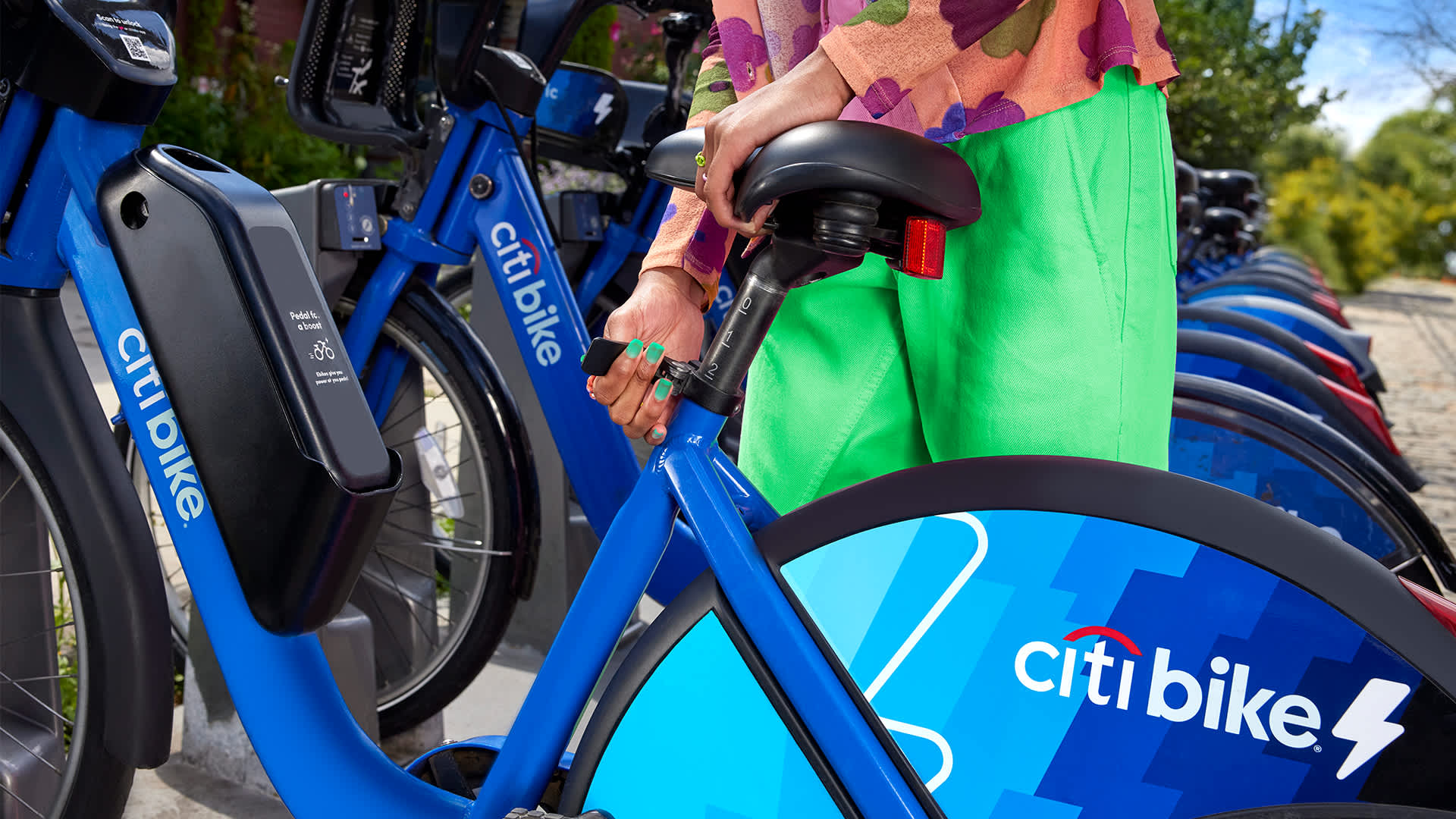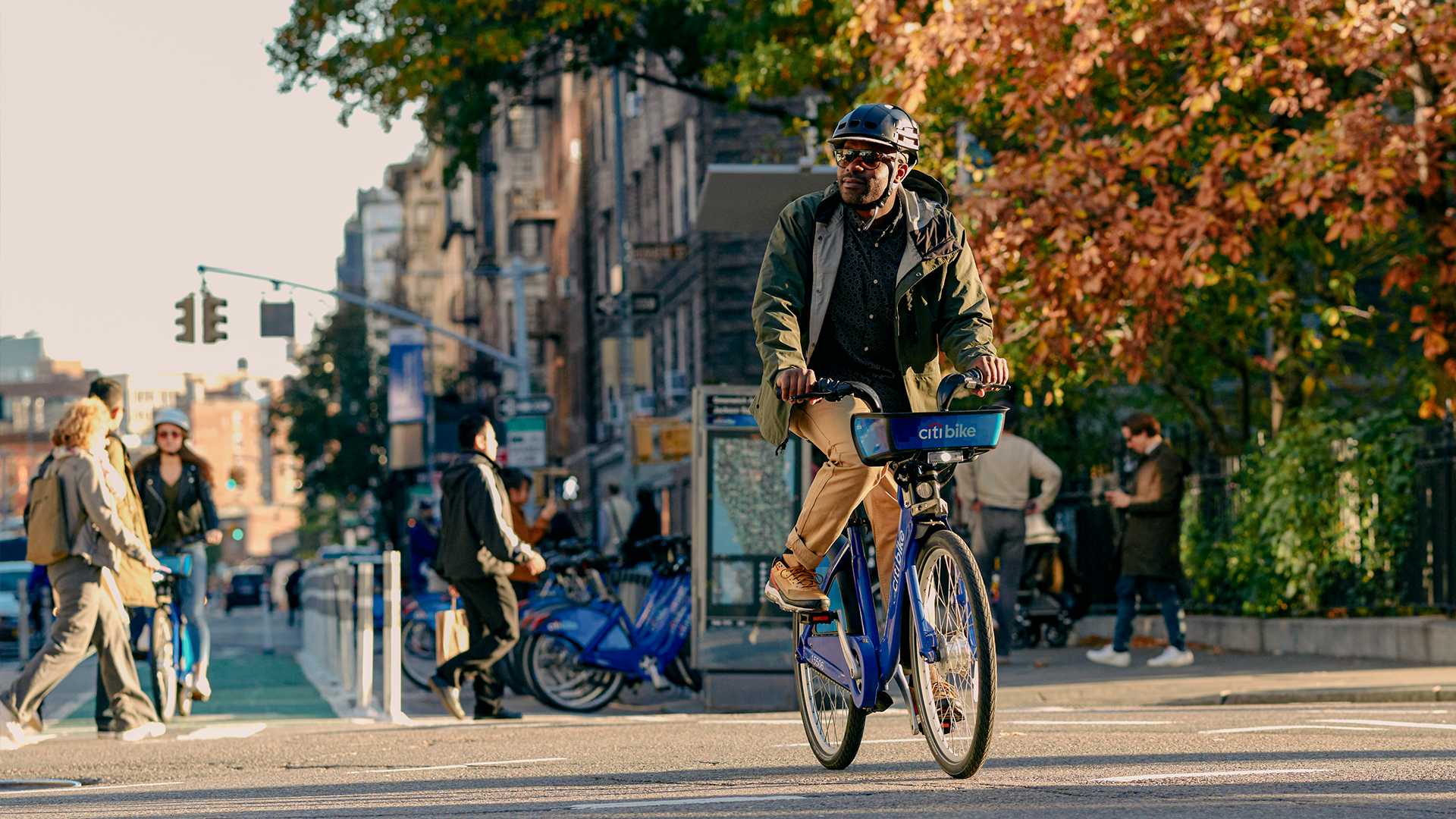
Americans drive trillions of miles every year, helping to make transportation the largest contributor to greenhouse gas emissions in the U.S.
To address the worst effects of climate change, we’ll need to drive less. The good news is that you don’t need to ditch your car entirely to have a meaningful impact. A recent University of Oxford study of driving behaviors in the U.K. suggests that swapping just one car trip for a bike trip every day can cut your lifetime CO2 emissions by as much as 67%.
Convincing people to leave their car at home might seem like a big task, but it’s not an impossible one. Here are a few proven ways to do it.
Build it, and they will bike
Cities around the world are turning to bike lanes to get more people out of their cars. When high-quality bike and pedestrian infrastructure is available and accessible — and when people feel safe using it — commuters are much more likely to turn to more active forms of transportation.
In his new book, Carmageddon, Daniel Knowles points to Paris’s efforts to add dedicated bike lanes as a recent success story. In 2017, the city closed off an entire expressway (Voie Georges-Pompidou) and handed it over to cyclists and pedestrians. Similarly, during the pandemic, the city quickly added nearly 40 miles of new bike lanes (many of them physically separated from car traffic) and is currently building more than 90 miles more.
The results speak for themselves. From 2010 to 2018, the number of daily bike riders increased by 30%, Knowles says. Car ownership for Parisian households has declined from 60% two decades ago to 35% today.
“The city now sees more than one million cycle journeys per day,” Knowles says, outpacing “that distinctly Parisian mode of transport, the motor scooter.”
Bike share and e-bikes offer convenient alternatives
Two newer innovations are also helping bikes gain ground: flexible bike-rental systems and e-bikes.
In a recent report, Lyft, which is the largest bike-share operator in the U.S., noted that 69% of its bike-share members don’t own or lease a personal vehicle. “If shared micromobility services didn’t exist, we estimate our riders would have purchased over 600,000 cars,” says Lyft researcher Sarah Cormack-Patton. The report also calculates that people have sold, donated, or otherwise discarded nearly 200,000 cars because of the availability of shared micromobility services and that as many as 73% of them would actually go back to using a car if these services weren’t available.
Data shows that e-bikes, too, are helping people leave their cars at home.
In a survey of nearly 1,800 e-bike owners conducted by the National Institute for Transportation, 28% of respondents said they purchased an e-bike to replace certain types of car trips. Indeed, e-bikes allowed them to leave their cars behind more often: They reported that 46% of their e-bike trips would have otherwise been made by car.
Tejus Shankar of Lyft’s Transit and Micromobility team says there are multiple reasons for e-bikes’ appeal. “E-bikes make longer trips easier and more realistic for people who may have been hesitant to try cycling,” he says. “They make bike commuting more accessible, and more welcoming, for a whole range of new riders.”
Lyft data shows that its own fleet of e-bikes provided over 18 million trips in 2022, with riders using them to travel nearly 40 million miles.
Nudge more people toward public transit
Public transit plays an important role in getting people out of their cars. The key is to make transit service frequent and accessible.
A 2021 study from Polytechnique Montreal found that increasing bus service in places where many of the city’s low-income workers live could significantly decrease those residents’ reliance on cars. The research predicts that adding 2.5 more buses per hour could decrease the share of commuting trips taken by car by 13%. In areas that had a convenient Metro stop, the decrease in car trips was even greater.
Bike-share networks can also play a part in supporting people’s transit usage. One study found that a 10% daily ridership increase in New York’s Citi Bike system led to a 2.3% increase in daily transit ridership. Similarly, a 10% daily ridership increase in D.C.’s Capital Bikeshare system led to a 2.8% increase in Metrorail’s daily ridership.
Public transit can be even more effective when it’s paired with forward-thinking urban planning that seeks to put housing, workplaces, and commerce around transit routes and stations.
The Orange Line in Arlington, Virginia, is a great example. When the D.C. area’s Metro system was being developed in the 1960s, Arlington successfully lobbied to have this train line run along a central street rather than a freeway median, and it prioritized dense, mixed-use development along that route.
Those decisions have continued to pay off in the decades since. While the population boomed, adding 38,000 residents between 1996 and 2012, the number of cars declined by as much as 23% along the main corridor and about 15% on several arterial roads nearby, according to county data.
Additionally, an abundance of parking in U.S. cities is linked to more car usage. As Rev previously reported, a 2016 research paper found that as midsize cities increased their average number of parking spaces from 0.2 per person to 0.5 per person, rates of car commutership rose by 23%.
Prompted by climate change and the need for more sustainable development practices, many cities are finally recognizing the need to create a world that’s less dependent on cars. There are still significant hurdles to making that happen, but real-world success stories show it can be done.
The content provided in this article is for informational purposes only. Unless otherwise stated, Lyft is not affiliated with any businesses or organizations mentioned in the article.


